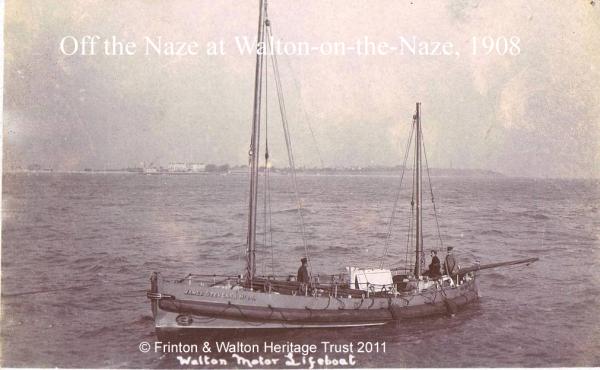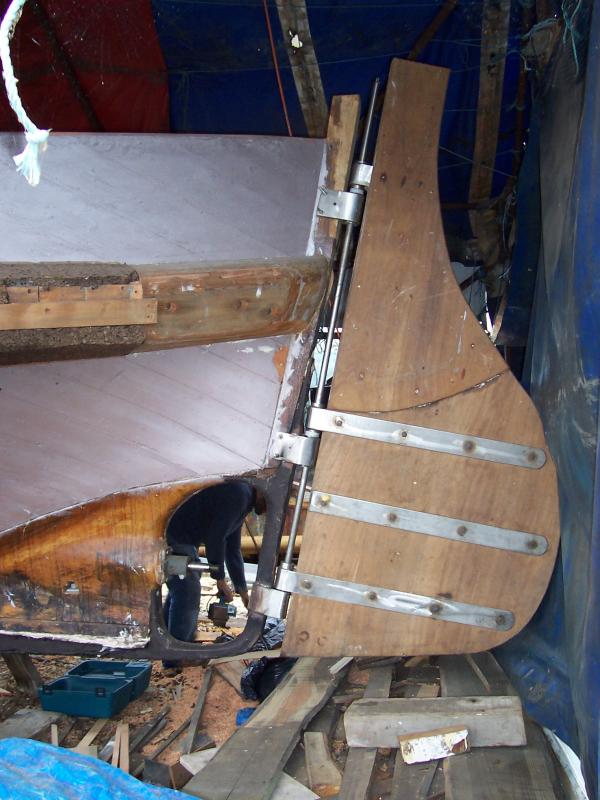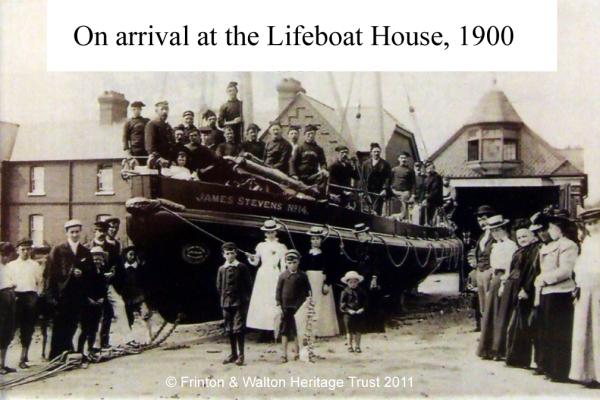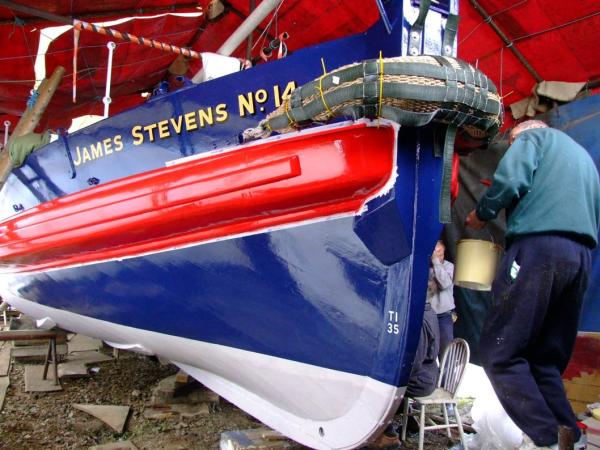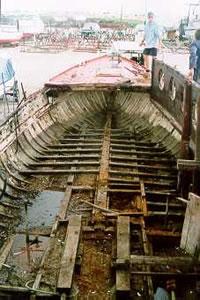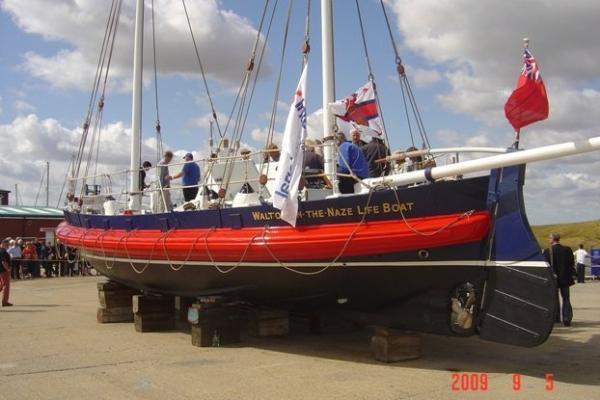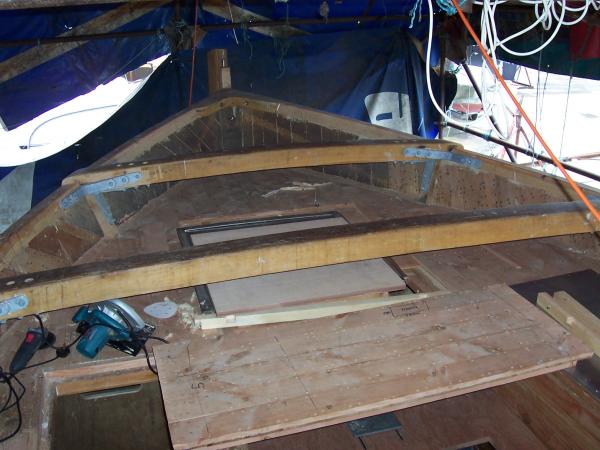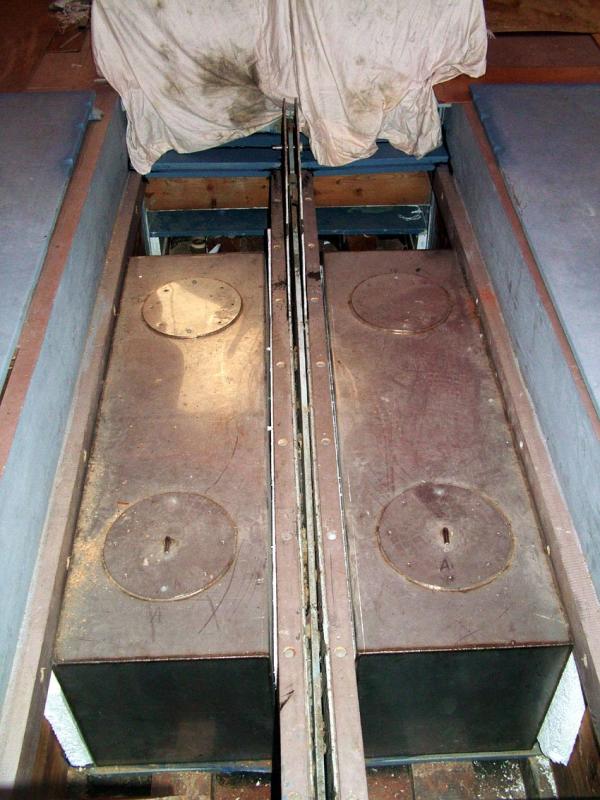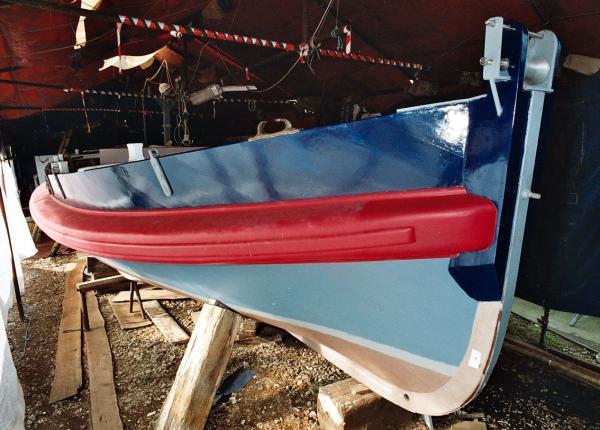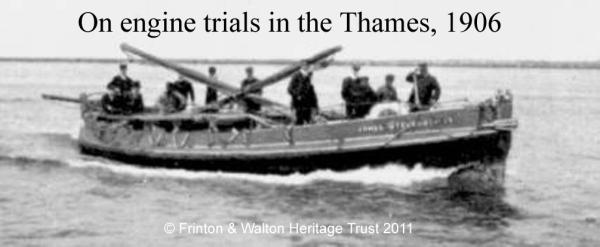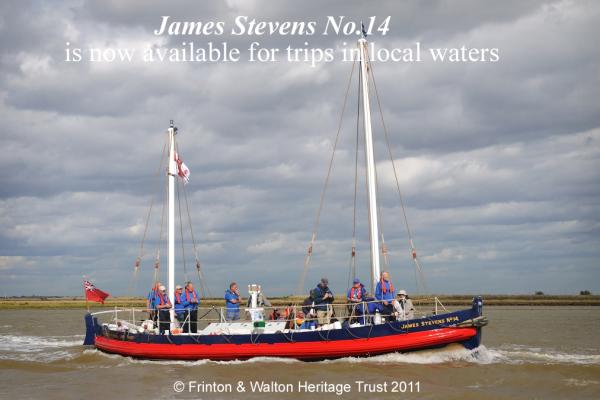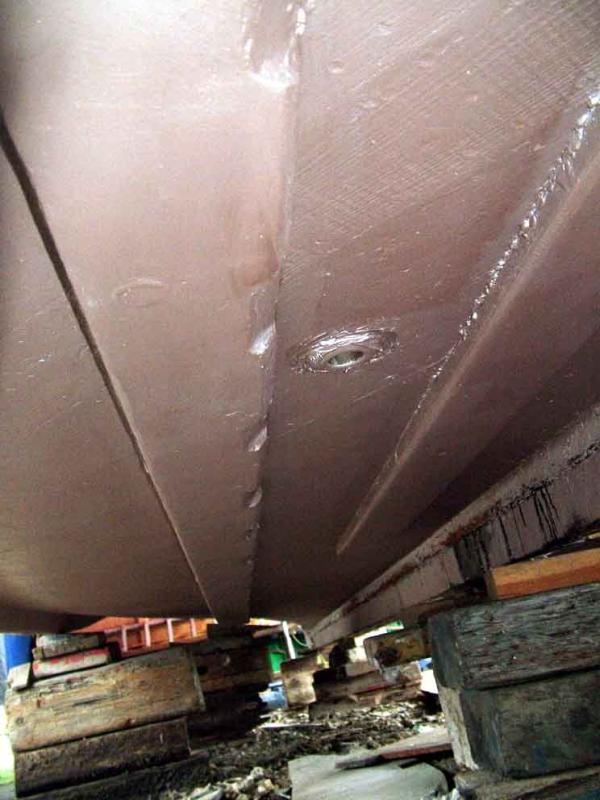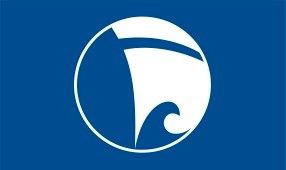
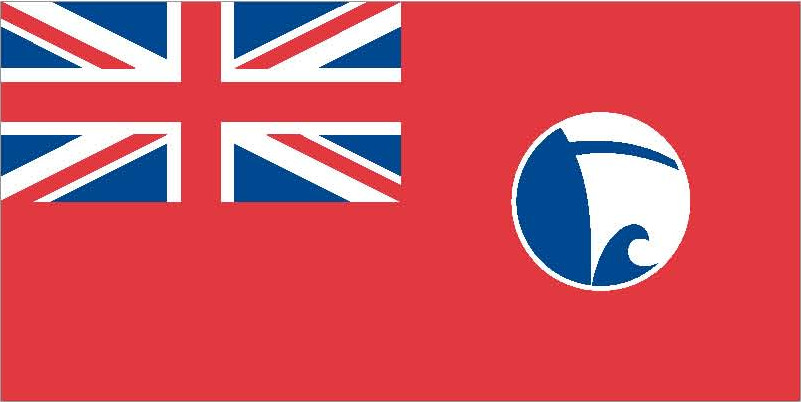
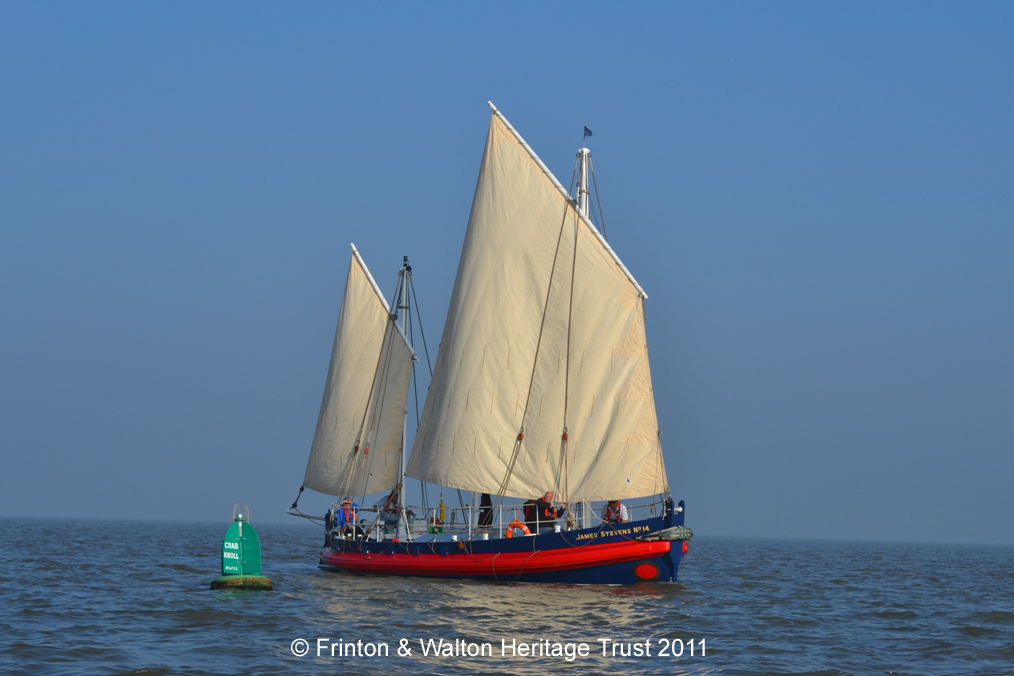
Previous names
- 1940 - 1998 Mardee
Details
Construction
Dimensions
History
JAMES STEVENS NO.14 (ON432) was the second Royal National Lifeboat Institution (RNLI) lifeboat to be stationed at Walton-on-the-Naze in north-east Essex. She was one of 20 vessels paid for out of a £50,000 legacy left by Birmingham businessman, James Stevens, after whom all 20 were named. A 43’ (13.11m) Norfolk & Suffolk class pulling and sailing type, she was built at Thames Ironworks in 1899/1900 with the yard number TI 35 and at a cost of £1420. The Lifeboat House at East Terrace (now Walton Maritime Museum) was especially enlarged to accommodate her but soon after her arrival in 1900 she was put permanently afloat on moorings off the south side of Walton pier, where all the town’s RNLI lifeboats have been kept ever since.
JAMES STEVENS NO.14 was returned to Thames Ironworks in 1905 to be fitted with a 40-hp Blake petrol engine, thus becoming one of the first motor lifeboats in the RNLI fleet. Frank Halls was appointed mechanic to look after her engine which gave a speed of seven to eight knots. The sails and oars were retained but one of the drop keels had to be removed. She returned to Walton-on-the-Naze on 26 October 1906 and her first service launch under motor power took place on 26 January 1907.
During her service career, JAMES STEVENS NO.14 launched 126 times rescuing 227 people. Her most famous rescue was on 29/30 December 1917 when she saved 92 passengers and crew plus two cats from SS PEREGRINE of London which had run aground on the Long Sand Head in a force nine easterly gale. Coxswain William Hammond was awarded a Silver Medal and Second Coxswain John Byford a Bronze Medal for this rescue.
After JAMES STEVENS NO.14's last service launch on 29 March 1928, she was sold out of RNLI service for £180 to May & Butcher, a Maldon company of timber importers, who used her as a work boat on the Rivers Blackwater and Colne. At some time in the next 14 years she was sold to J Powles Ltd and acquired the name MARDEE. There is strong evidence to suggest that MARDEE took part in the evacuation of Dunkirk in 1940, but conclusive proof has not yet been found. In May 1942 she was taken over by the Department of War Transport and used as a fire boat on the River Thames; two large round metal plates on her hull marked the position of the water inlets for her fire hoses.
She was decommissioned in 1946 at Ibbotson’s yard at Beccles, Suffolk and in 1950 was purchased by Graham Starke for £500. Graham’s son Michael remembers a plaque referring to the Dunkirk evacuation being removed by the vendor at the time of sale. At this stage MARDEE had a single Scripps V8 petrol engine, an American Ford derivative used in Bren Gun Carriers during WW2. A secondary Kelvin petrol engine was fitted on the starboard side in 1951 in Lowestoft. From 1952 she was based at Brightlingsea where the Starke family sailed extensively in the Blackwater and Colne estuaries.
In 1961 she went to Cardnell’s Yard at Maylandsea for a major refit, including a new stern post. From 1963 she was kept in the Heybridge Basin. In 1967 Mr Starke found a second Scripps V8 engine in a MoD warehouse at Southampton, still in its shipment crate greased and oiled as new. He used this identical engine to replace the one which had completed at least 20 years’ service.
She was sold for £1200 in August 1976 to Mr R Gale of Hornchurch, who wanted to sail her to the Mediterranean via the Bay of Biscay! Instead she was put into the fresh water Heybridge Canal until l978 when Mr M Burling bought her. The engines and ancillary equipment were removed so she could become a houseboat in a mud berth at Maldon, ownership passing to D P Orriss in 1988 and then to J Newton in 1991.
A member of the Lifeboat Enthusiasts’ Society, Tony Denton, discovered and identified the vessel as an old RNLI lifeboat during the 1990s. Despite a large superstructure, she was still recognisable: the wide fender so characteristic of her class was still there as were the stemhead fairleads. Unfortunately modification to her stem meant that only the ‘3’ of her builder’s number TI 35 could be seen. However, consultation and detective work soon revealed her original identity: JAMES STEVENS NO.14
Frinton & Walton Heritage Trust was advised of the vessel’s location and, in 1996, the Newtons lent the Thames Ironworks’ builder’s plate to Walton Maritime Museum for display. When, in 1998, they requested the plate back as they wanted to sell the vessel, the Trust decided to purchase the boat and return her to her home town of Walton-on-the-Naze.
Significance
1. What is the vessel’s ability to demonstrate history in her physical fabric?
Evidence for designs, functions, techniques, processes, styles, customs and habits or uses and associations in relation to events and people. How early, intact or rare these features are may impact on significance.
JAMES STEVENS No.14 (ON 432) was a 43ft Norfolk & Suffolk class pulling and sailing type lifeboat, built at Thames Ironworks in 1900, with the builder’s number TI 35. She returned to the builders in 1906 to be fitted with a 40-hp Blake petrol engine as part of an experimental programme becoming one of the first motor lifeboats in the RNLI fleet. The sails and oars were retained but one of the drop keels was removed. When bought in 1950 (then known as MARDEE) she had a single Scripps V8 petrol engine, an American Ford derivative. A secondary Kelvin petrol engine was fitted on the starboard side in 1951. In 1961 she went to Cardnell’s Yard at Maylandsea for a major refit, which included the fitting of a new stern post. In 1967 the Scripps V8 engine was replaced by an identical new one. In 1976 the engines and ancillary equipment were removed so that she could be used as a houseboat. When found in the 1990s she had a large superstructure but was still recognisable as a lifeboat: the wide fender characteristic of her class was still there, as were the stemhead airleads. Modification to her stem meant that only the ‘3’ of her builder’s number could be seen.
Major reconstruction was undertaken between 2002-2009, using larch in place of the original mahogany and only a small proportion of her original fabric now survives. The hull was re-planked and the two layers of planking clenched; the hull was primed and all seams and nails stopped and caulked. The ribs were replaced, with 80 new oak ones being fitted and clenched. A new keelson was installed in two pieces scarfed together inside the boat. Several short ribs were then fitted at the bow and stern. Following cutting of the keel bolts the wrought iron keel was removed, cleaned, coated with epoxy tar and replaced using new key bolts. The ballast tank bearers and their hull battens were restored and replaced. The original iron keel was refitted, the keel fastened to the original wooden hog and new keelson by new iron bolts. New larch longitudinal bulkheads were fitted onto the original bearers, which were successfully restored. New larch thwarts and deck beams were also fitted along with some decking. New oak stem cheeks were installed and the fender replaced on both sides. New metal fittings and equipment installed included stanchions, metal knees, scuppers, tabernacles, rigging plates, sail blocks and the rigging, drop keel and case, and fuel and ballast tanks. A Ford Mermaid diesel engine was added on new engine bearers. Automatic and manual bilge pumps were fitted along with two ballast tanks. New spruce masts and spars were made, along with new sails crafted in the traditional hand-sewn way. Finally, painting of the hull, internal gunwales and fittings was undertaken.
2. What are the vessel’s associational links for which there is no physical evidence?
Associations with people or places. Off-ship research.
JAMES STEVENS NO.14 (ON 432) is strongly associated with Walton-on-the-Naze and other towns in north-east Essex. She was the second RNLI lifeboat to be stationed there. She was one of 20 vessels paid for out of a £50,000 legacy left by Birmingham businessman, James Stevens, after whom all 20 were named. The Lifeboat House at East Terrace (now Walton Maritime Museum) was enlarged to accommodate her, but soon after her arrival in 1900 she was put permanently afloat on moorings off the south side of Walton pier, where all the town’s RNLI lifeboats have been kept ever since. During her service career, she launched 126 times rescuing 227 people. Her most famous rescue was on 29/30 December 1917 when she saved 92 passengers and crew plus two cats from SS PEREGRINE of London which had run aground on the Long Sand Head in a force nine easterly gale. Coxswain William Hammond was awarded a Silver Medal and Second Coxswain John Byford a Bronze Medal for this rescue.
After her last service launch on 29 March 1928, she was sold out of service to May & Butcher, a Maldon company of timber importers, who used her as a work boat on the Rivers Blackwater and Colne. At some time in the next 14 years she was sold to J. Powles Ltd and acquired the name MARDEE. There is strong evidence to suggest that MARDEE took part in the evacuation of Dunkirk in 1940, but conclusive proof has not yet been found. In May 1942 she was requisitioned by the Department of War Transport and used as a fire boat on the River Thames; two large round metal plates on her hull marked the position of the water inlets for her fire hoses. She was decommissioned in 1946 and sold to a series of private owners who kept her on the East Coast.
JAMES STEVENS NO. 14 was purchased by the Frinton & Walton Trust in 1998 and returned to her home town. She is well documented with photographs of conservation work undertaken. She has been recorded on the National Register of Historic Vessels since 1999.
3. How does the vessel’s shape or form combine and contribute to her function?
Overall aesthetic impact of the vessel, her lines, material she was built from and her setting. Does she remain in her working environment?
Norfolk & Suffolk class pulling and sailing type lifeboats were designed specifically to deal with the shallow water and sandbanks of the east coast of England. They were of shallow draught, enabling them to manoeuvre alongside vessels grounded on sandbanks. To counterbalance this they had two heavy iron drop keels for stability in deeper water. They also carried a huge area of sail; there was a dipping fore lug and a standing mizzen, the sheet of which was led inboard from the end of an outrigger, while the fore tack was led through a bumpkin at the stemhead. Norfolk & Suffolk class lifeboats were heavy vessels, capable of smashing their way through tumultuous seas, and often under continuous near-swamp conditions. To ensure rapid clearance of unwanted water on deck they had 24 large relieving tubes through the bottom and 5 scuppers each side. JAMES STEVENS NO.14 was thus entirely fit for purpose. When under sail she presents a graceful and pleasing appearance. She was operational at Walton-on-the-Naze since 2009 in the waters where she spent her service life, but is now laid up pending further conservation.
Source: NHS-UK team, 15 February 2017. Updated January 2024.
Key dates
-
1900
Built at Thames Ironworks as a pulling and sailing lifeboat
-
1905
Returned to Thames Ironworks to be fitted with a 40hp petrol engine
-
1928
Sold out of service to May & Butcher - timber importers from Maldon
-
1942
Taken over by the Department of War Transport and used as a Thames fireboat
-
1946
Decommissioned and bought by Graham Starke
-
1952
Based at Brightlingsea
-
1960-1961
Underwent a major refit at Maylandsea
-
1998
Bought by the Frinton & Walton Heritage Trust for restoration
-
2009
Re-launched at Walton-on-the-Naze following a major reconstruction
-
2012
Vessel selected for Queen's Diamond Jubilee Pageant on 3 June 2012
Grants
-
March 2007
A grant of £2000 by National Historic Ships to cover the costs of new signage was made from the Strategic Development Fund of National Historic Ships
-
2000/01
The Heritage Lottery Fund awarded £75,000 for restoration
Own this vessel?
If you are the owner of this vessel and would like to provide more details or updated information, please contact info@nationalhistoricships.org.uk

